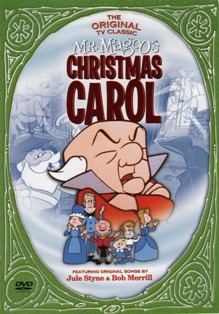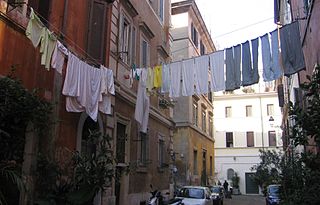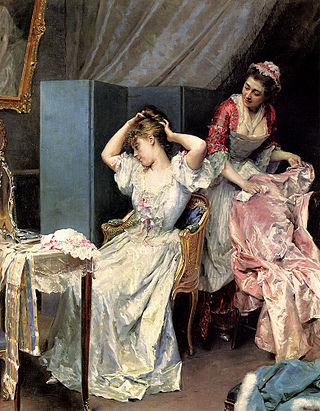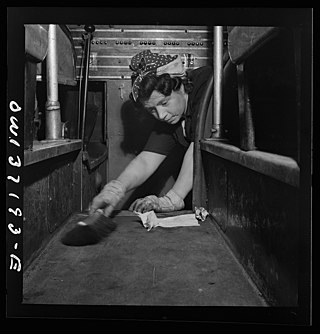
A washerwoman or laundress is a woman who takes in laundry. Both terms are now old-fashioned; equivalent work nowadays is done by a laundry worker in large commercial premises, or a laundrette (laundromat) attendant.

A washerwoman or laundress is a woman who takes in laundry. Both terms are now old-fashioned; equivalent work nowadays is done by a laundry worker in large commercial premises, or a laundrette (laundromat) attendant.

As evidenced by the character of Nausicaa in the Odyssey, in the social conventions depicted by Homer and evidently taken for granted in Greek society of the time, there was nothing unusual or demeaning in a princess and her handmaidens personally washing laundry. However, in later times this was mostly considered as the work of women of low social status. The Magdalene asylums chose laundering as a suitable occupation for the "fallen women" they accommodated.
In between these two extremes, the various sub-divisions of laundry workers in 19th-century France (blanchisseuse, lavandière, laveuse, buandière, repasseuse, etc.) were respected for their trade. A festival in their honour was held at the end of winter (Mi-Careme, halfway through Lent, i.e. three weeks after Mardi Gras or Shrove Tuesday). [1] This festival has now been revived as Mi-Carême au Carnaval de Paris.
The wet nurse to George III of the United Kingdom, who was born two months prematurely, was so valued by the king when he grew up that her daughter was appointed laundress to the Royal Household, "a sinecure place of great emolument". [2]
In many cultures, laundry was seen as "women's work", so the village wash-house (lavoir) acted as a space for women to gather and talk together as they washed clothes. While having a significant social function in various human cultures over thousands of years, the spread of washing machines and self-service laundries has rendered washerwomen unnecessary in much of the contemporary world.

The subject of laundresses or washerwomen was a popular one in art, especially in France, [3] see WikiCommons.
In literature, the washerwoman may be a convenient disguise, as with Toad, one of the protagonists of The Wind in the Willows (1908), in order to escape from prison; and in The Penultimate Peril story of the Lemony Snicket book series A Series of Unfortunate Events , Kevin the Ambidextrous Man poses as a washerwoman who works in the laundry room at the Hotel Denouement.
Also, washerwomen serve as characters depicting the working poor, as for example in A Christmas Carol : when the Ghost of Christmas Yet to Come showed Ebenezer Scrooge his future where he is dead, the laundress assists the charwoman Mrs. Dilber and the unnamed undertaker into stealing some of Scrooge's belongings and selling them to a fence named Old Joe.
One of the most famous Irish jigs is known as The Irish Washerwoman, although due to its age the origin of this title is not well known. [4]

Mister Magoo's Christmas Carol is a 1962 animated musical holiday television special produced by UPA. It is an adaptation of Charles Dickens' 1843 novella A Christmas Carol, and it features UPA's character Mr. Magoo as Ebenezer Scrooge. The special first aired on December 18, 1962, on NBC and was the first animated Christmas special to be produced specifically for television.

Laundry is the washing of clothing and other textiles, and, more broadly, their drying and ironing as well. Laundry has been part of history since humans began to wear clothes, so the methods by which different cultures have dealt with this universal human need are of interest to several branches of scholarship.

A maid, housemaid, or maidservant is a female domestic worker. In the Victorian era, domestic service was the second-largest category of employment in England and Wales, after agricultural work. In developed Western nations, full-time maids are now typically only found in the wealthiest households. In other parts of the world, maids remain common in urban middle-class households.

Les Lavandières, or the Midnight Washerwomen, are three old washerwomen in Celtic mythology. Names in various Celtic languages include the kannerezed noz in Brittany and the Bean nighe in Gaelic. They can also be found in the Celtic folklore of Iberia as Las Lavanderas in Cantabria, As lavandeiras in Galicia or Les Llavanderes in Asturias, and in Portugal are known as Bruxas lavadeiras . The three old women go to the water's edge at midnight to wash shrouds for those about to die, according to the myth and folklore of Brittany; or to wash the bloodstained clothing of those who are about to die, according to Celtic mythology. The Midnight Washerwomen may be related to the old Celtic tradition of the triple goddess of death and slaughter.

Scrooge is a 1951 British Christmas fantasy drama film and an adaptation of Charles Dickens's A Christmas Carol (1843). It stars Alastair Sim as Ebenezer Scrooge, and was produced and directed by Brian Desmond Hurst, with a screenplay by Noel Langley. It also features Kathleen Harrison, George Cole, Hermione Baddeley, Mervyn Johns, Clifford Mollison, Jack Warner, Ernest Thesiger and Patrick Macnee. Michael Hordern plays Marley's ghost and the older Jacob Marley. Peter Bull narrates portions of Charles Dickens' words at the beginning and end of the film, and appears on-screen as a businessman.

Blanchisseuse is a village in Trinidad and Tobago. It is located about midway along the north coast of Trinidad on the northern slope of the Northern Range, about 24 km north of Arima.
The bean-nighe is a female spirit in Scottish folklore, regarded as an omen of death and a messenger from the Otherworld. She is a type of ban-sìth that haunts desolate streams and washes the clothing of those who are about to die. Les Lavandières is the French word under which these "night washerwomen" are perhaps best known. She is also called nigheag, 'the little washer', nigheag na h-ath, 'little washer of the ford', or nigheag bheag a bhroin, 'little washer of the sorrow'.

A Christmas Carol is a 1999 British-American made-for-television film adaptation of Charles Dickens' 1843 novella A Christmas Carol that was first televised December 5, 1999, on TNT. It was directed by David Jones and stars Patrick Stewart as Ebenezer Scrooge and Richard E. Grant as Bob Cratchit.

Vredehoek is a residential suburb of Cape Town, South Africa, located at the foot of Table Mountain and Devil's Peak. It is sandwiched between the two neighbouring suburbs of Oranjezicht and Devil's Peak Estate, the latter of which is often considered a sub-suburb of Vredehoek as they both fall under the neighbourhood watch community called DPV - Devil's Peak & Vredehoek.

A charwoman is an occupational term, referring to a paid part-time worker who comes into a house or other building to clean it for a few hours of a day or week, as opposed to a maid, who usually lives as part of the household within the structure of domestic service. A charwoman might work independently, often for cash in hand, or might come through an employment agency.
The Collar Laundry Union was the first all-female labor union in the United States. It was started in Troy, New York by Kate Mullany in 1864.

A cleaner or a cleaning operative is a type of industrial or domestic worker who does the cleaning.

A self-service laundry, coin laundry, or coin wash, is a facility where clothes are washed and dried without much personalized professional help. They are known in the United Kingdom as launderettes or laundrettes, and in the United States, Canada, Australia and New Zealand as laundromats. In Texas and other parts of the south central United States, the term washateria is still used by some older speakers. The first laundromat opened on April 18, 1934 in Fort Worth, Texas.
Washerwoman or Washerwomen may refer to:

The Laundress (La Blanchisseuse) (also known in English as The Washerwoman) is an oil-on-panel painted by French artist Honoré Daumier in 1863. It is exhibited at the Musée d'Orsay in Paris. The subject of laundresses, also known as washerwomen, was a popular one in art, especially in France.

De strijkster is a painting by Rik Wouters in the Royal Museum of Fine Arts Antwerp. It is one of many scenes from daily life from which the painter found inspiration and took as a subject. His wife, muse and favourite model was Hélène Duerinckx (Nel).

The Laundress or A Young Girl Doing Laundry is the title of three oil paintings by the French artist Jean Siméon Chardin. The subject of laundresses, also known as washerwomen, was a popular one in art, especially in France.
The Atlanta washerwomen strike of 1881 was a labor strike in Atlanta, Georgia involving African American washerwomen. It began on July 19, 1881, and lasted into August 1881. The strike began as an effort to establish better pay, more respect and autonomy, and a uniform base salary for their work.
A Christmas Carol is a 2020 British Christmas drama dance film directed by Jacqui Morris and David Morris and based on Charles Dickens' 1843 novella A Christmas Carol. It features the voices of Simon Russell Beale, Siân Phillips, Carey Mulligan, Daniel Kaluuya, Andy Serkis, Martin Freeman and Leslie Caron. It received mixed reviews from critics.